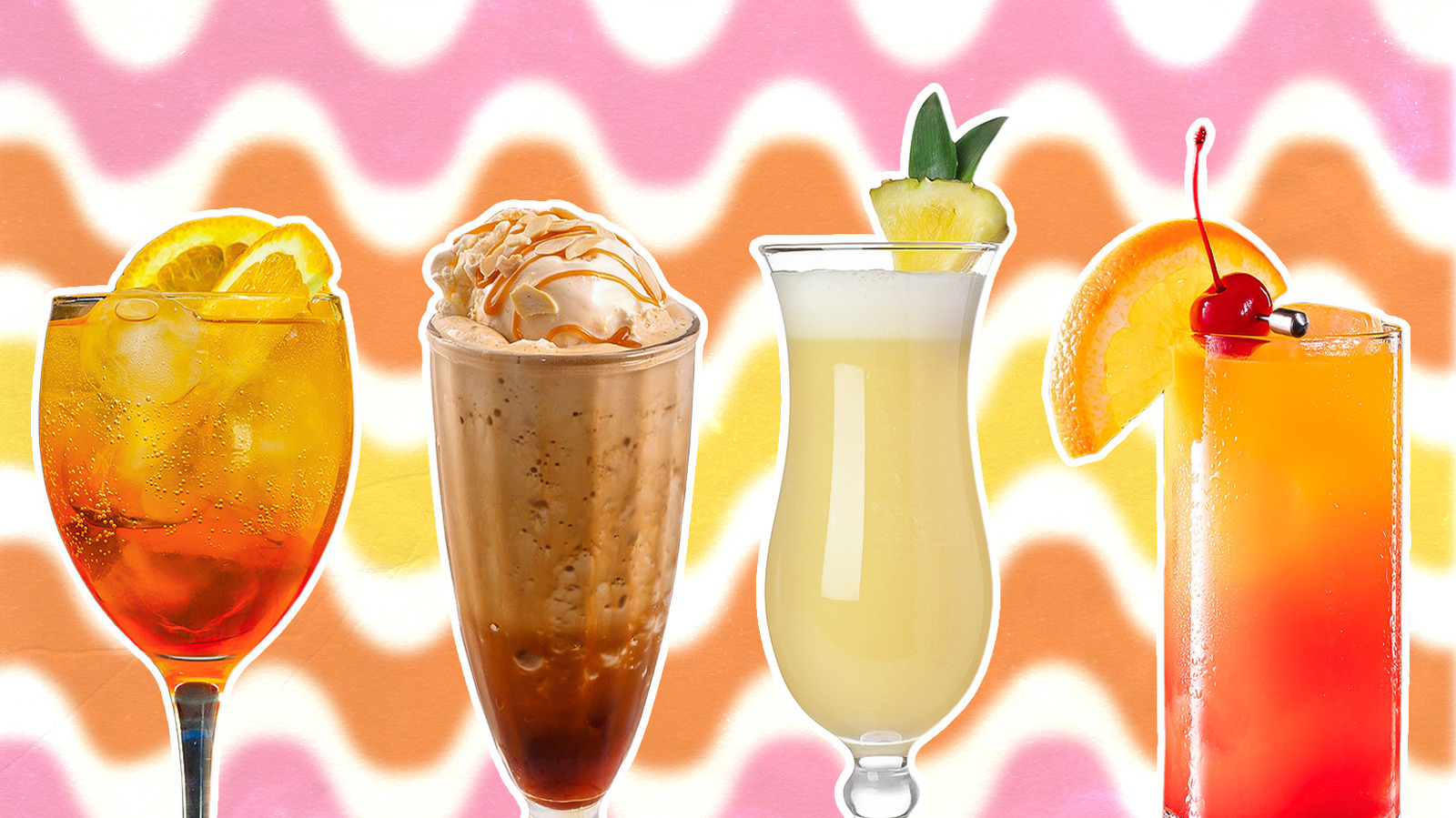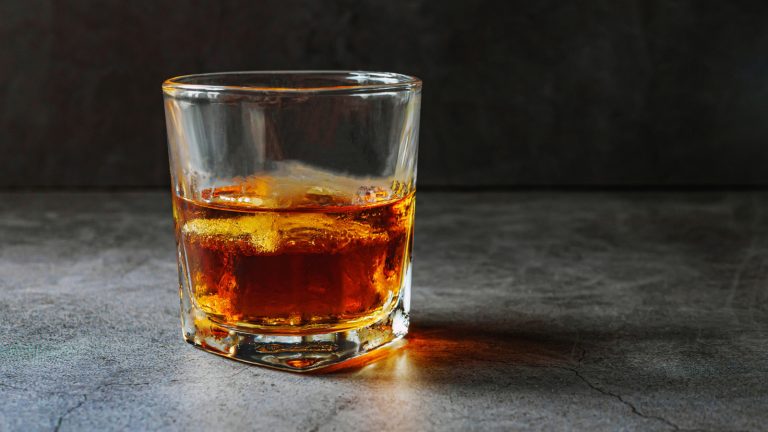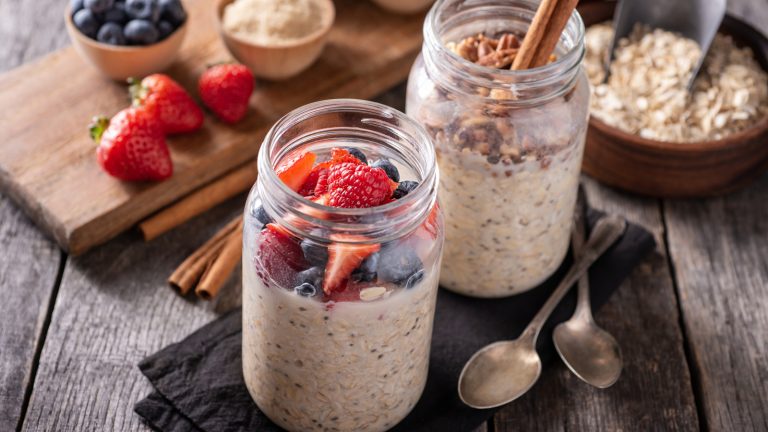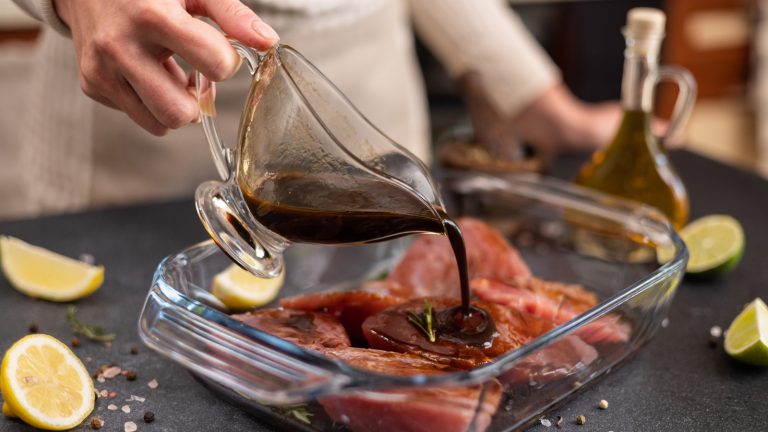The 1970s were a time of change in the United States, from the country’s involvement in the Vietnam War to the Gay Liberation Movement and the Watergate Scandal. Culturally, the country saw a fresh wave of film and television that solidified the idea of a summer block-buster (thank you, Jaws!) and rock music continued to dominate airwaves as bands like Aerosmith, Led Zeppelin, and Fleetwood Mac put out hit after hit. But we can’t forget the impact that disco had on the decade, or some of the most popular cocktails of all time that had their heyday in the 1970s.
Disco as a music genre prioritized its funk, soul, and Latin influences to create a sound that contributed to a feeling of freedom and fun. Beyond the music, disco itself was a way of life. As a subculture, it offered liberation and expression, particularly for the LGBTQ+ community. And disco club culture cannot be spoken of without the disco drinks that revelers had in hand when hitting the dance floor. In honor of the cocktails that dominated the era, we’re exploring 14 of the most popular. Though they may not be enjoyed as frequently today, they are still classics in their own right.
Godfather
In 1969, Mario Puzo’s novel, “The Godfather,” was published and available for book-lovers to purchase. Only a few years later, it was adapted into a film series by acclaimed director Francis Ford Coppola. The films are considered to be some of the most influential movies to have ever been made in large part thanks to the compelling characters and enduring relevance of the films’ themes, which center around family and power. “The Godfather” follows a no-nonsense Italian-American crime family based in New York City as they navigate power dynamics at play within their criminal organization as well as their family.
The cocktail named after the film series is as no-nonsense as the characters themselves, using only two simple ingredients: amaretto and scotch. Amaretto is an Italian liqueur known for its almond flavor despite being made from the pits of stone fruit. Mix it together with blended scotch — though some use bourbon or single malt in their recipes — and the result is a smooth slow sip drink.
Rusty Nail
Not every drink that shone in the 1970s was created then. Many had previous histories in past decades like the Rusty Nail, which is said to have been created in 1937. Others, however, posit that the Rusty Nail came from a Manhattan bar in the 1960s. It’s said that the drink was a particular favorite among the Rat Pack — a famous group of entertainers including Frank Sinatra, Dean Martin, and Sammy Davis Jr— which may have contributed to its popularity.
As with the Godfather, a Rusty Nail is pretty straightforward. Scotch is the preferred liquor, mixed with Drambuie in a 2:1 ratio. Drambuie has an almost sweet taste alongside smokiness and a hint of spice from cinnamon and clove. As a whiskey liqueur, Drambuie pairs wonderfully with Scotch and the ratio can be adjusted to specific personal tastes, with some variations of the recipe substituting Scotch entirely for other liquors like mezcal or rye whiskey.
Piña Colada
San Juan, Puerto Rico, is the home of the piña colada, a fruity, fresh blend of coconut cream, pineapple, and rum that makes any warm summer day that much better. Ramón “Monchito” Marrero was a bartender at the Caribe Hilton when he concocted the drink in 1954, and the cocktail gained such national (and international) praise that it was even designated as the nation’s national drink in 1978. To further cement the drink’s rise in pop culture, Rupert Holmes’ song “Escape” permanently put the piña colada into the zeitgeist.
While the particular brand of pineapple juice or rum used in the drink can vary, Marrero was said to have used Coco López as his cream of coconut of choice when making the drink. For the most authentic taste, one should follow the Caribe Hilton recipe, which is crafted with pineapple juice, white rum, and coconut cream alongside heavy cream, as well as ice to blend.
Blue Hawaii
Created in 1957, the Blue Hawaii was the result of a conversation between a sales representative for a distiller and bartender Harry Yee at the Hilton Hawaiian Village in Honolulu, Hawaii. It’s said that the sales rep asked Yee for a drink that used the distiller’s brand of blue curaçao— a liqueur made with the peel of the Laraha fruit. The final product brought together the blue curaçao (which gave the drink its distinctive color), rum, vodka, pineapple, and sweet-and-sour mix.
The garnish is possibly just as famous as the drink itself, almost always being served with a pineapple wedge and a mini cocktail umbrella, and Yee himself is also credited with the popularity of cocktail umbrellas in garnishing. Beware when ordering at a bar that the Blue Hawaii isn’t to be confused with the Blue Hawaiian, which is essentially a piña colada with blue curaçao added. And while we wish it were true, Elvis Presley’s 1961 film “Blue Hawaii” is not named after this drink, but rather a song from the film “Waikiki Wedding,” which starred Bing Crosby.
Tequila Sunrise
During the Prohibition era in the United States (which lasted from 1920 to 1933), alcohol consumption didn’t just stop. While some people took to making alcohol, or hooch, at home or drank what was illegally imported, others opted to simply cross the border for a good, stiff drink. For those in California, Mexico was a prime spot to get an alcohol fix without being under the watchful eye of the U.S. government. It was in Tijuana, at the Agua Caliente resort, that the tequila sunrise came to be.
Post-Prohibition, the tequila sunrise found its way to U.S. bars including the Trident in Sausalito, California. It’s there, at the Trident, that the Rolling Stones first tried the drink. When the band headed back out on the road for their tour, it’s said that lead singer Mick Jagger requested the drink’s ingredients at every tour stop so they could have the drink at will. Made of tequila, grenadine, and orange juice, it still to this day is a simple, easy to mix drink and with the recent tequila boom, may be back on the rise.
Mudslide
The Mudslide is the result of drink evolution. It can be traced back to the Black Russian, which is a drink of vodka and coffee liqueur. But over time, people wanted something else from the drink, so cream was included. That variation demanded a name, which gave us the White Russian. Once again, a change was necessitated, this time at the behest of a patron at the Rum Point Club on Grand Cayman island who ordered a White Russian. The switch? Irish cream instead of regular cream was used to make the popular drink.
Modern interpretations of the drink err more on the boozy milkshake side of things, with some recipes actually calling for an ice cream base of chocolate or vanilla, typically. Some bars serve the drink with a chocolate drizzle inside the glass and a cherry on top, but the original is shaken, not blended, and is garnished with chocolate shavings.
Snowball
Snowball cocktails can be traced back to Britain in the 1940s and were originally made with brandy to offset the sweetness of the other ingredients. But when the drink had a resurgence of popularity in the 1970s, the brandy was often left out (though, not all the time) so that the sweetness could shine, which is perhaps how it became a popular Christmas beverage. It features Advocaat, which is a Dutch liqueur made from eggs. Strange, perhaps, that eggs are the primary ingredient in Advocaat given it was made to imitate the use of avocado in a Caribbean drink that Dutch sailors had once enjoyed.
A traditional Snowball is a bit of a conundrum. It’s creamy yet refreshing and oscillates between sweetness and sourness thanks to the citrus juice and sparkling lemonade. As with many other popular cocktails of the time, Snowballs are remarkably substitution-friendly. For example, some recipes opt to use champagne as opposed to the more traditional sparkling lemonade.
Golden Cadillac
Poor Red’s in El Dorado, California, is the origin of the Golden Cadillac in 1952 thanks to a little bit of bartending ingenuity. A couple is purported to have asked a bartender at the joint for a special drink, and after combining heavy cream, Galliano, and white crème de cacao, the bartender called it the Golden Cadillac after the couple’s car sitting outside. Galliano was a popular liqueur in the 1970s with a rich depth of vanilla and herbal notes that complemented its anise undertones.
The drink became a regular menu item for Poor Red’s, and became such a hit that the company behind Galliano noticed an uptick in sales in the area and eventually created a marketing campaign around the Golden Cadillac. It’s a simple drink that was easy for bartenders to pump out, requiring only a shaker, a glass, and garnish (chocolate shavings or nutmeg, preferably). The taste is reminiscent of melted ice cream, but is hardly anything to scoff at.
Grasshopper
Chocolate and mint just go together. The Girl Scouts, Junior Mints, and pretty much every major ice cream company in the world all know it, and in the 1970s, one cocktail took that pairing to heart. The grasshopper made its debut in New Orleans at Tujague’s. Owner Philibert Guichet created the cocktail as an entry for a New York City cocktail competition, where he won second prize with the green hued beverage.
For the 100th anniversary of the drink, Tujague’s released an adapted recipe consisting of white crème de cacao, dark crème de cacao, green crème de menthe, white crème de menthe, brandy, and heavy whipping cream.While we’d love to recommend trying the original recipe, having that many ingredients on hand at your home bar is a big ask. For a simplified recipe, instead combine white crème de cacao, crème de menthe, and heavy whipping cream. The result will still have a smooth, minty aftertaste without requiring so many separate components.
Harvey Wallbanger
Another popular cocktail of the 70s that used Galliano is the Harvey Wallbanger. One of many cocktails of the time with some rather scandalous names — Slow Screw, Merry Widow(er), and Slow Comfortable Screw Against The Wall, to name a few — the Harvey Wallbanger was considered one of the most famous drinks of the decade. Its base is similar to that of a screwdriver, which mixes vodka and orange juice, but with the addition of a Galliano float.
There are several stories around how the Harvey Wallbanger was made — and just how exactly it got its eye-catching name — but many say Donato “Duke” Antone created it at his bar on Sunset Boulevard in Los Angeles, California in 1952. Decades later, a marketer caught wind of it and advertised the drink more broadly. Soon afte,r a cartoon mascot named Harvey Wallbanger was used to push the beverage, becoming so popular that a cake recipe soon followed.
Midori Sour
Midori is a melon flavored liqueur from Japan that struck gold when it was introduced to U.S. patrons at Studio 54 in New York City. John Travolta was reportedly one of the first people to try the samples brought to the cast party for “Saturday Night Fever.” The film became the tenth highest grossing movie of the 1970s and Studio 54 has gone down in history as one of the defining clubs of the era serving patrons from Andy Warhol to Elizabeth Taylor.
While there are several cocktails that use the fluorescent green Midori, the Midori Sour is perhaps the most well known. Vodka is mixed with Midori as well as lime and lemon juice and stirred. Some top with club soda, while others go without, but club soda can be helpful to cut the sometimes overwhelming sweet and sour flavor of the drink. The drink fell out of favor in following decades, but may have a chance at making a comeback thanks to its candy-like taste.
Aperol Spritz
Spritzes have long been enjoyed as an apéritif (for the French) or aperitivo (for the Italians) thanks to their freshness and utter simplicity. While there are plenty of variations to choose from, the Aperol Spritz certainly is the most recognizable. Aperol was created by brothers Luigi and Silvio Barbieri as a result of seven years of experimentation. Once it successfully launched, aperol gained widespread popularity across Italy.
In the United States, Aperol Spritzes are often viewed as a classic, lightweight drink best enjoyed at happy hours or at lunches. Its popularity has surged in the 21st century thanks to social media and shows like “The White Lotus,” which has featured its glamorous characters drinking the beverage. Despite its resurgence in popularity, the taste of Aperol isn’t for everyone. It has citrusy and herbal notes, but don’t expect it to be sugary sweet, especially when paired with the customary prosecco and soda water used to turn it into a spritz.
Singapore Sling
Singapore today is a bustling metropolis with technological advancements and architecture that stuns, but just over 100 years ago, the area was marked by nut plantations, not the skyscrapers it’s known for today. Among the plantations was the Raffles hotel, and inside was its famous Long Bar. It was at the Long Bar in 1915 where bartender Ngiam Tong Boon created the Singapore Sling. At the time, women were unable to drink alcohol from a social norms standpoint, not a legal one. So if women wanted to drink, they had to do so discreetly, and the Singapore Sling allowed just that.
From the outside, the Singapore Sling looks like any other cup of fruit juice, but it enabled women of the time to drink freely without societal judgement. But surprisingly, the traditional recipe for the drink only contains two types of juice: lime and pineapple. Into those juices you add gin, soda water, grenadine, Angostura bitters, Benedictine DOM, cherry brandy, and Cointreau for a refreshing, but powerful, cocktail.
Greyhound
Two ingredient cocktails were — and still are — easy ways to enjoy delicious refreshments, and the Greyhound is included among those ranks. It’s a simple recipe, one that allows grapefruit juice to shine alongside either gin or vodka, depending on your preference. The drink first cropped up in a 1930 cookbook before being officially named in “Harper’s Magazine.” In print, it was first called the Greyhound, and while we can’t be sure that this is the exact reason, some say it’s because the drink was popular at Greyhound bus stations at the time.
For those that aren’t as passionate about tartness, there is a workaround to enjoy the drink. The addition of simple syrup can cut the tart flavor just enough, though other substitutions or additions can do the trick. The cousin of the Greyhound is the Salty Dog, which adds a coarse salt rim to the glass, and for those who want a more Asian influence, the Salty Shiba switches vodka or gin for sake.





